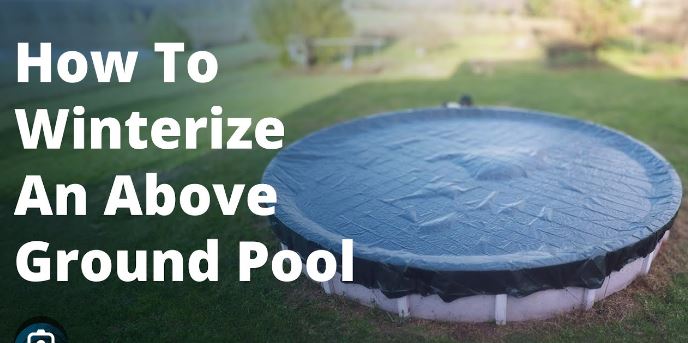Winterize an above ground pool san antonio in winter is a crucial step in ensuring its longevity and preserving water quality. In this comprehensive guide, we’ll walk you through the essential steps to winterize your pool effectively. From balancing water chemistry to using an air compressor, each step is vital in safeguarding your investment against the harsh winter elements.
It’s essential to prepare your above-ground pool for the colder months ahead. Proper winterization not only protects your pool from potential damage but also makes the reopening process in the spring a breeze. In this step-by-step guide, we’ll walk you through the easy process of winterizing your above-ground pool.
Step 1: Gather Your Supplies
Before diving into winterization, gather essential supplies such as a winter pool cover, winterizing chemicals, a pool pillow, a skimmer guard, and a winter cover air pillow. Ensuring you have all necessary below mentioned tools beforehand streamlines the process, preventing last-minute hassles
- Pool cover
- Winterizing chemicals (pool shock, algaecide)
- Skimmer winterizing plate or gizzmo
- Winterization plugs
- Air compressor or shop vac
- Pool brush and vacuum
- Pool cover pump
Step 2: Balance the Water Chemistry
Achieving the right water chemistry is crucial for winterizing your above-ground pool. Test the water and adjust the pH, alkalinity, and calcium hardness levels to their recommended ranges. This ensures that your pool remains well-balanced, preventing corrosion, scaling, and algae growth during the winter months
Step 3: Clean Your Pool Thoroughly
A clean pool is easier to winterize. Vacuum the pool, scrub the walls, and skim off any debris. This minimizes the organic matter that can decompose over winter, affecting water quality.
Remove any debris, leaves, and algae from your pool using a pool brush and vacuum. Clean the skimmer and pump baskets as well. A clean pool ensures that no contaminants will affect the water quality during the winter.
Step 4: Lower the Water Level
To avoid damage from freezing water, lower the water level in your pool below the skimmer opening. Use your pool pump or a submersible pump to drain the excess water. Be cautious not to drain too much, as this may cause the liner to shrink or the pool to collapse.
Step 5: Winterize the Plumbing
Ensure the plumbing system is free from water to prevent freezing. Blow out the plumbing lines using an air compressor to remove any residual water. This step is crucial in preventing pipes from bursting during freezing temperatures, protecting your pool’s infrastructure.
Step 6: Add Winterizing Chemicals
Add winterizing chemicals into the pool to inhibit algae and bacterial growth. Algaecides and winterizing kits are available to simplify this process. Proper chemical treatment preserves water clarity and quality throughout the winter, ensuring a hassle-free opening when spring arrives.
Step 7: Cover Your Pool Securely
Place the pool cover over your clean and treated pool. Ensure it is tightly secured with a cable and winch or another appropriate fastening system. A secure cover protects your pool from debris and helps maintain water quality.
Step 8: Use an Air Compressor to Blow Out Lines
Use an air compressor to blow out the plumbing lines systematically. Begin with the skimmer, main drain, and return lines. This ensures that all water is expelled, reducing the risk of freeze damage. Exercise caution and follow the manufacturer’s guidelines to prevent any mishaps during this process.
Step 9: Install Winterization Plugs
Place winterization plugs into the skimmer and return lines after blowing them out. This additional step adds an extra layer of protection, preventing water from entering the plumbing system and causing potential damage during freezing temperatures.
Step 10: Monitor the Pool Throughout Winter
Regularly check on your pool throughout the winter to ensure the cover remains secure and there are no issues. Clear any accumulated snow promptly and check for water accumulation. Periodic inspections help address potential problems early, ensuring your pool is ready for a smooth reopening when warmer weather arrives.
Video Guide –
Conclusion:
Winterizing your intex above-ground pool may seem like a daunting task, but by following these simple steps, you can protect Winterize an Above-Ground Pool and save your investment and make the reopening process stress-free come spring.
Remember to gather the necessary supplies, balance the water chemistry, clean your pool, lower the water level, winterize the plumbing, add winterizing chemicals, cover your pool securely, blow out the lines, install winterization plugs, and monitor your pool throughout the winter.
By taking these precautions, you’ll ensure a smooth transition into the warmer months ahead.

